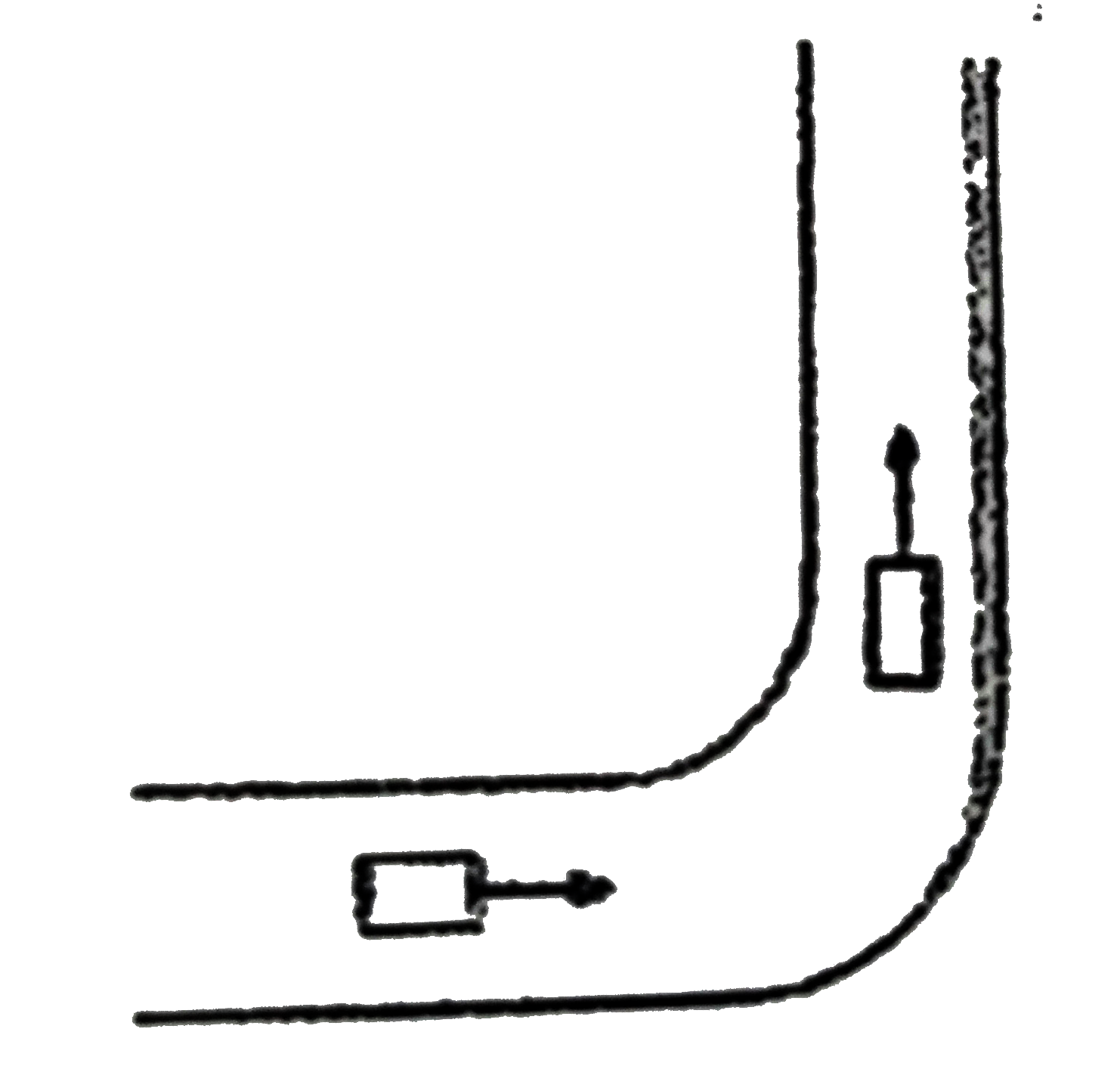The diagram below is a snapshote of three cars all moving couterclockwise during a one lap race on an elliptical track.

Which car vsn finish the race without changing its present velocity ?
car A
car B
car C
none of the three cars can finish the race with present velocity
The correct Answer is:D
on curve path momentum must be changed.
Topper's Solved these Questions
- TEST PAPERSBOOK - BANSALCHAPTER - TEST PAPERSEXERCISE - PHYSICS PART (A)
32 Videos
- TEST PAPERSBOOK - BANSALCHAPTER - TEST PAPERSEXERCISE - PHYSICS PART (B)
3 Videos
- TEST PAPERSBOOK - BANSALCHAPTER - TEST PAPERSEXERCISE - PHYSICS PART- C
4 Videos
- SEMICONDUCTORSBOOK - BANSALCHAPTER - SEMICONDUCTORSEXERCISE - CBSE Question
32 Videos
Similar Questions
A charged particle moving with a uniform velocity →v enters a region where uniform electric and magnetic fields →E and →B are present. It passes through the region without any change in its velocity. What can we conclude about the (i) relative direction of →E, →V and →B? (ii) magnetic of →E and →B?
or
Find the condition under which the charged particle moving with different speeds in the presence of electric and magnetic field vectors can be used to select charged particles of a particular speeds.
View SolutionThe graph below represents the velocity vs. time graph for a car.

(A) During which intervals is the car at rest?
(B) During which intervals is the car moving a constant nonzero velocity ? State the velocity at each of these intervals
(C) There are two intervals during which the car is accelerating. Find the acceleration in each of these intervals.
(D) Sketch the acceleration vs. time garph that corresponds to the motion of the car form 0s to 14s.
View Solution
Knowledge Check
The diagram below is a snapshote of three cars all moving couterclockwise during a one lap race on an elliptical track.

Which car has had the lowest average speed during the race so far ?Acar ABcar BCcar CDcannot be determined with information providedThe diagram below is a snapshote of three cars all moving couterclockwise during a one lap race on an elliptical track.

Which car at the moment of the snapshot MUST have a net force acting on it ?Acar ABcar BCcar CDall three cars have net force acting on themThe graph given show the position of two cars A and B as a function of time. The cars move along the x axis on parallel but separate tracks, so that they can pass each other's position without colliding.

Which one of the following best describes the motion of car A as shown on the graphs?Aspeeding upBconstant velocityCslowing downDfirst speeding up, then slowing down
A car is moving with 20ms−1 from west to east and takes left turn in 5sec without changing its speed find average acceleration of the car during period of 5 sec.

View Solutiona. A rail road flat car of mass M can roll without friction along a straight horizontal track . Initially, a man of mass m is standing on the car which is moving to the right with speed v0. What is the change in velocity of the car if the man runs to the left so that his speed relative to the car is vrel just before he jumps off at the left end?
b. If there are n men each of mass m on the car, should they all run and jump off together or should they run and jump one by one in order to give a greater velocity to the car?

View SolutionAn object falls from the car and the observer in the train notices that the car has moved on for one minute, turned back, and moved with a speed of 10 km/h and picked up the object two minutes after turning. Find
(a) the velocity of the train relative to the ground and
(b) the velocity of the car during its forward and reverse journeys.
Assume that the object comes to rest immediately after fall from the point of view of the observer on the ground.
View SolutionThe figure above shows the race track in which ABCD is a square of side 21 km and MQR is an isosceles triangle. One can travel along the square at the speed of 5 kmph, along the circle at the speed of 4 kmph and along the triangle at 3 kmph. While travelling along these tracks one has to change tracks, at a point where two or three intersect each other.
View SolutionWe know how by neglecting the air resistance, the problems of projectile motion can be easily solved and analysed. Now we consider the case of the collision of a ball with a wall. In this case the problem of collision can be simplified by considering the case of elastic collision only. when a ball collides with a wass we divide its velocity into two components, one perpendiclar to the wall and other parallel to the wall. If the collision is elastic then the perpendicular component of velocity of the ball gets reversed with the same magnitude.

The other parallel component of velocity will remain constant if wall is given smooth.
Now, let us take a problem. Three balls A,B, and C are projected from ground with same speed at same angle with the horizontal. The ball A,B and C collide with the wall during their flight in air and all three collide perpendicularly with the wall as shown in figure.

The vertical component of velocity of balls wiht which they are projected is
View Solution
